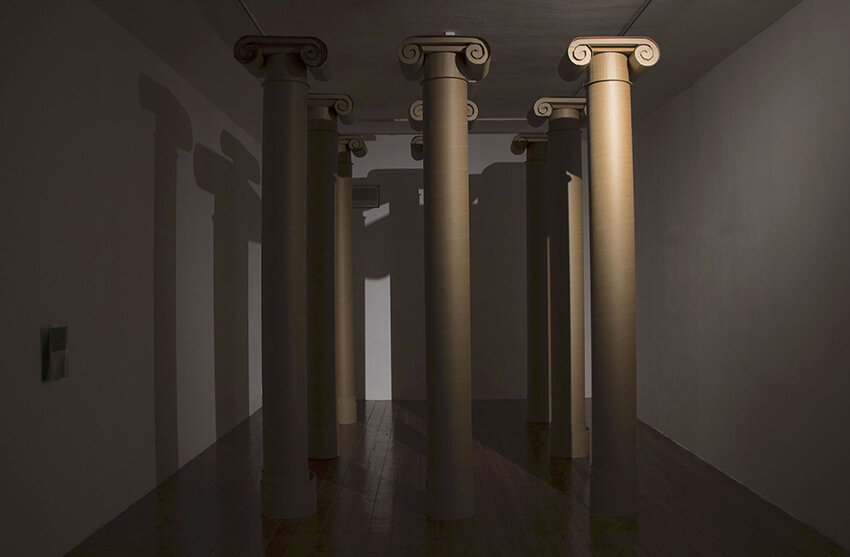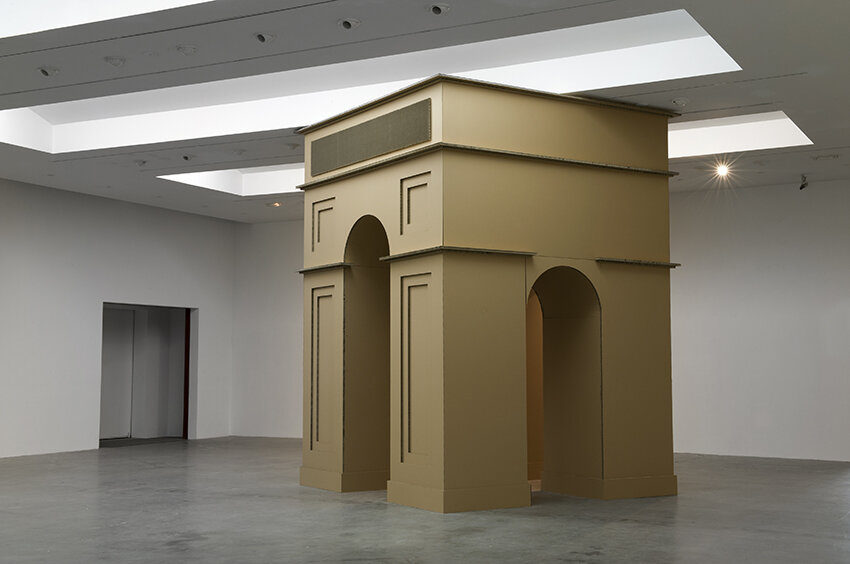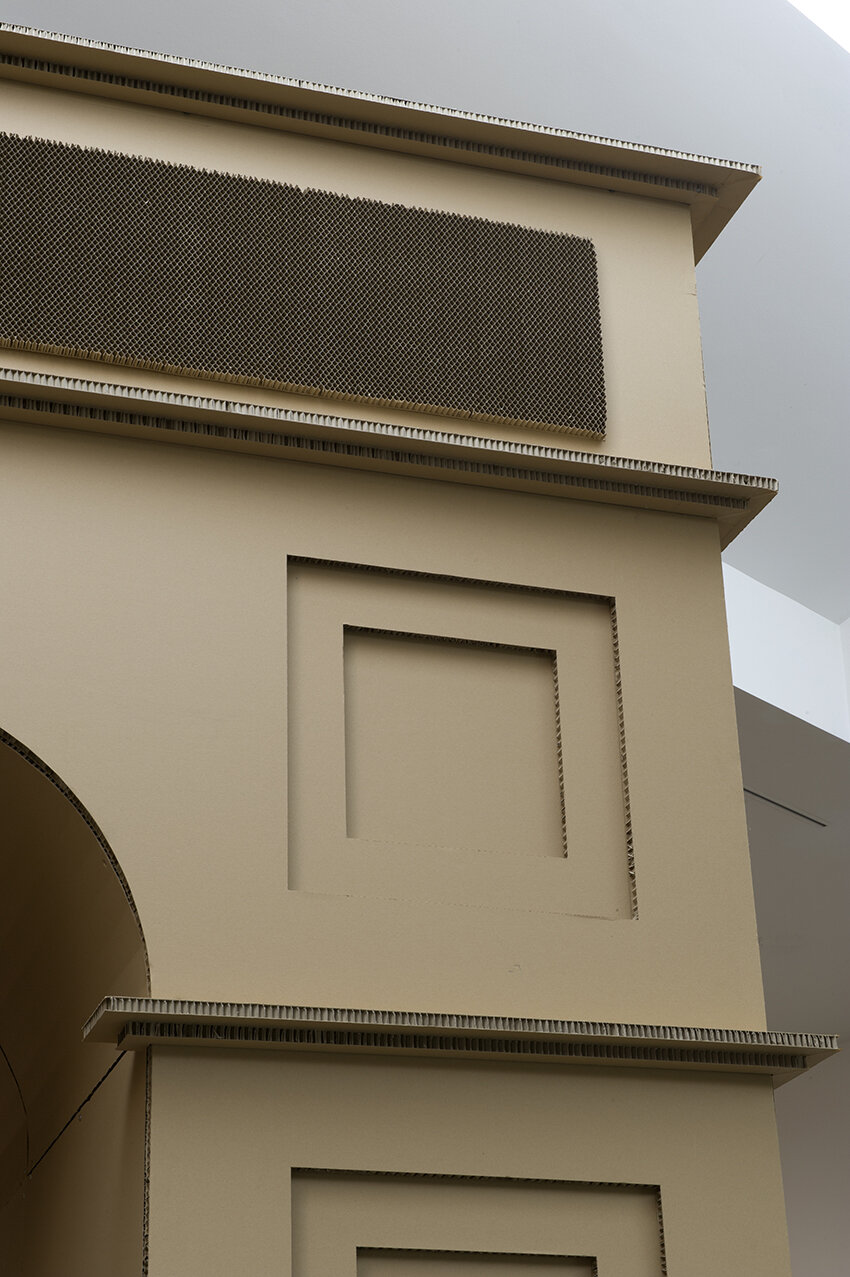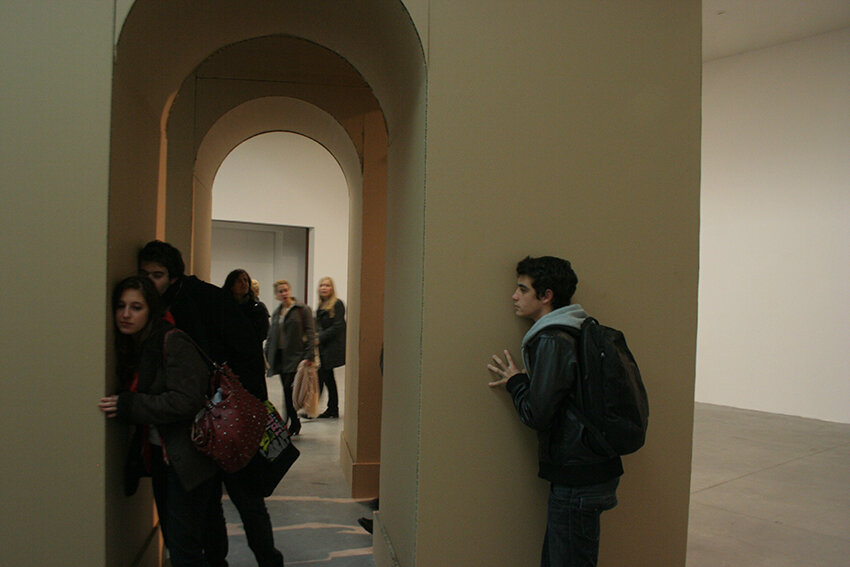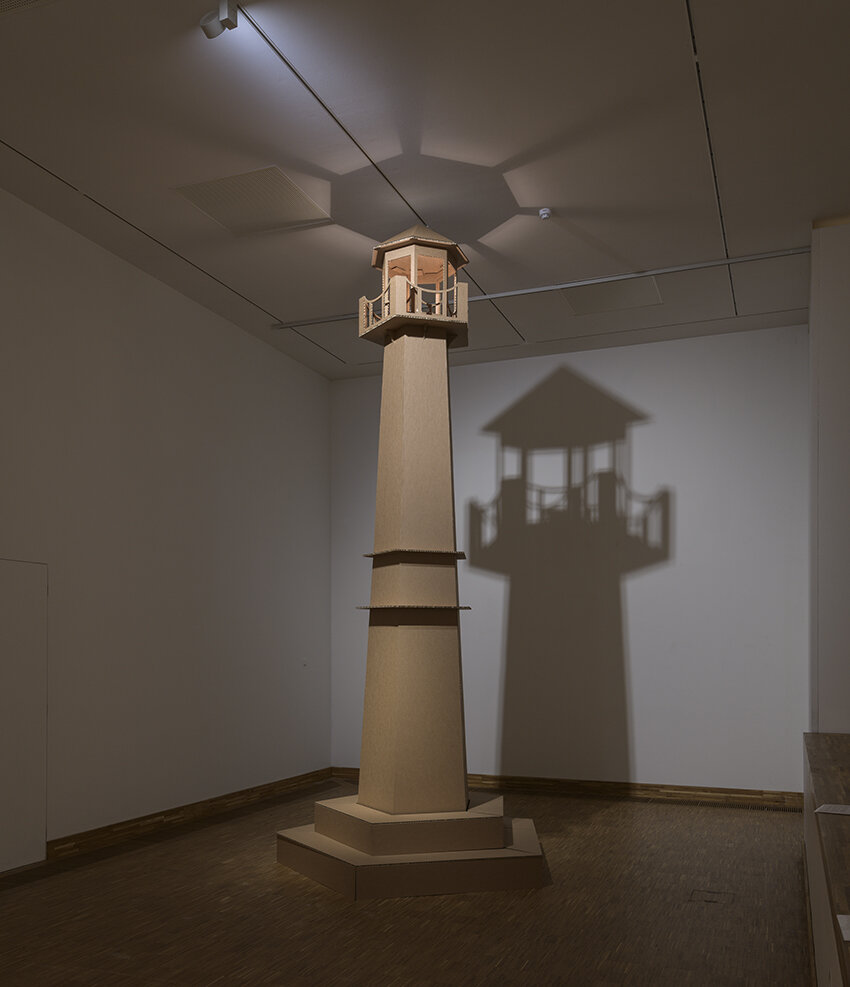Non-Monuments Programme
Since 2012 MADEYOULOOK has worked as a self-appointed, non-aligned monument’s committee called the Non-Monuments Programme. Since its inception the programme’s mandate has been to reimagine forms of memorialisation such as historical monuments and colonial architecture from the perspective of everyday life.
The programme is a response to the ubiquitous and constant presence of imposed histories of subjugation and colonial epistemes. A non-monument is a large-scale site-specific installation that typically borrows the language and stylistic forms of conventional monuments, but rather than bronzes or marble, is constructed entirely from cardboard. Non-Monuments are predetermined as temporary, and are intended to be reassembled in various other iterations based on geographical and historical context. Inside the large-scale cardboard shells are the “true monuments”: sound recordings of ordinary people’s historical reflections, emitted from within. The recordings are informed by the deeply localized practice of oral history and its potential to emphasize under-addressed and invisibilised histories, while simultaneously disrupting the truth claims of singular historical narratives. The personalised and malleable oral recordings are a testament to the transience of memory, a stark counterpoint to the supposed permanence and objectivity of the grand statues of colonial conquest.
There have been four iterations of the Non-Monuments:
The first took the form of a Trojan horse that was travelled to various sites of historical significance around South Africa. This Non-Monument sought to challenge the official narratives of the apartheid past, but also of post-1994 revisions.
The second iteration of the project was in France and took the form of a Triumphal Arch. It housed oral histories of ordinary people, leaders and events that have been contested and suppressed by established French national narratives.
The third Non-Monument was produced at the invitation of the Michaelis Galleries at the University of Cape Town, an undeniably loaded space at the centre of the Rhodes Must Fall Movement. This edition of the programme sought to affirm the movement’s calls to foreground the power and violence of colonial monuments such as the Rhodes Monument that has since been removed from campus grounds. This edition of the Non-Monuments Programme took its form from another Rhodes Memorial located on Table Mountain.
The fourth and most recent iteration took the project to Amersfoort, a town in the Netherlands. The Amersfoort was the name of the first ship to ever bring slaves to South Africa. This edition sought to remember the many lives lost in passage aboard the Amersfoort. The Non-Monument took the form of a lighthouse searching for the lost souls while the sound recording, a praise poem by South African poet Ngonyama, recalls the lives lost, but also calls their spirits into the present as a kind of genealogical roll-call.

